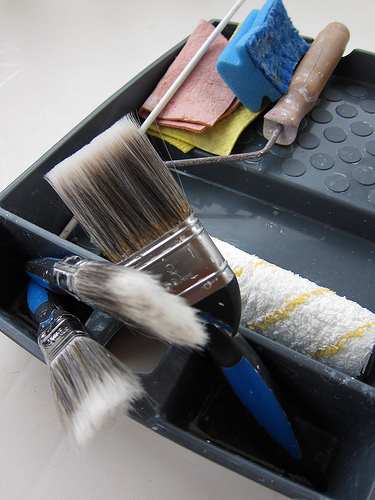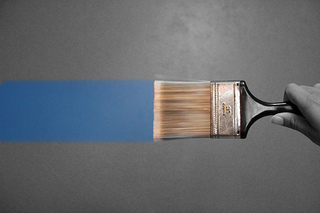
A fresh coat of paint does wonders for your home, inside and out. You can hire a painting professional to make sure the job is done right and to avoid the hassles that naturally come along with painting. But if you’re a do-it-yourselfer, it will help if you know about common mistakes that people often make when they’re painting.
1 – Painting on a Soiled Surface
It’s important to wash the walls and/or ceilings before painting them. They may not look like they need cleaning; but they do. Paint looks and stays on better when applied to a clean surface. Even minute particles of dust can interfere with best results.
2 – Painting on an Un-prepped Surface
Flaking, peeling paint needs to be removed, and a glossy surface needs to be scraped before applying a new coat of paint. Otherwise, the paint won’t provide the best coverage, and it won’t stick well.

3 – Not Using Tape
Apply tape around window sills, door frames, and anyplace else where clean edges are needed. If you don’t use tape, you’ll likely end up with a sloppy looking paint job.
4 – Leaving Fixtures Exposed
Before painting, cover doorknobs, light fixtures, and anything else in the room other than the surface to be painted. You don’t want to end up with paint-splotched doorknobs or wall plates.
5 – Painting the Ceiling Last
If you’re painting the ceiling as well as the walls, it’s important to paint the ceiling first. Otherwise, there’s a good chance that the new paint job on the walls will be spoiled with drips from the ceiling.
6 – Painting a Wet Surface
It’s important that the paint surface is dry. After washing walls, leave adequate time for them to thoroughly dry. In humid weather, allow even more time for the drying out process. Problems caused by painting on a wet surface include peeling and blistering of the paint.
7 – Painting on Rotten Wood
Fresh paint isn’t a solution for wood that’s rotting. The wood needs to be replaced before painting. In fact, imperfections in the walls should be patched up with compound, as well. Give the compound plenty of time to dry or it will spoil the look of your paint job.
8 – Not Using Primer
Primer gives your paint a sound surface to adhere to, and it improves the look of the fresh shade. Primer is especially important if you’re painting over a different, darker color or if there are stains on the wall.

9 – Using the Wrong Tools
There are times when a roller is the best tool, and there are times when it’s better to use a paintbrush. There are many different kinds of paintbrushes, and it’s worth the investment to buy the best type of brush for the surface you’re painting and the type of paint you’re using.
10 – Failing to Keep Touch-Up Paint
After your interior walls are painted, don’t forget to save some of the extra paint in a jar. When it comes time to touch up the paint, you’ll be all set. Just shake the paint and dab it on with a cotton swab or a small brush. Without the perfectly matched touch-up paint, you’ll have a dilemma on your hands when a dab is needed here and there.
These are just ten of many things that can go wrong with a paint project. Again, no doubt, the very best way to avoid mistakes is to leave your home’s interior and exterior paint job to a professional.

Frank Campanelli, the esteemed founder of Franklin Painting LLC, has been leading the company since 1986. He takes immense pride in the stellar reputation his dedicated team has built by consistently delivering top-notch service to each customer.


